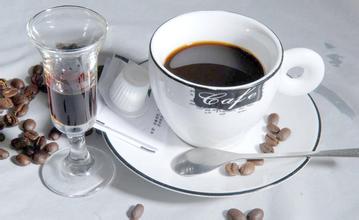Can coffee beans with rich flavor and deep roasting be blended?
The coffee that is already rich and deeply roasted has an obvious bitter taste at first, but you'll soon get used to it. The strongest coffee is a deep-roasted continental blend, which is made into Italian concentrate and is popular throughout southern Italy for its unique bitterness, but almost no one cares about it elsewhere. The blended coffee in northern Italy has a light roasting degree, uniform texture and soft acidity, such as high-quality wine.
Nothing can stop you from creating your own match, but it doesn't advocate mixing two opposing beans, such as Ethiopia and Sumatra. When the two are mixed, the wine smell of Ethiopian beans makes the strong smell of Sumatran beans smell like dirt. But you can try mixing good Colombian and Sumatran beans, or try to find the best match between deep-baked and light-baked beans.
For some people who want coffee that tastes soft and not bitter, Arabica such as Columbia beans or Chagga in Tanzania can try, although Chagga has a slight acidity. For those coffee with strong flavor, it depends on how well it is roasted. Of course, for coffee, especially soft varieties like Brazil and Costa Rica, although you can roast them deep and taste strong, they can't be any more bitter. But if you add a little Robusta to it, you'll get a little astringent, a little bold. You can mix different flavors and characteristics in different combinations. Chagga-Java-Mocha is a good example, which includes the mellow taste of Java, the soft acidity of Chagga and the rich texture of Mocha.
The ideal way is to buy a small amount of raw beans, bake them yourself, and grind the beans directly before making coffee. However, most of us have to buy baked beans, and maybe this number will increase in the near future.
When storing beans, the biggest enemy is water. The volatile oils that give us aroma in the cup are soluble in water, and a humid environment can affect the oil. Do not store coffee in the refrigerator, because once the coffee is opened, the moisture will condense on the surface of the container.
If you want to store the coffee well at any time, the best way is to put it in the freezer and make sure it is encapsulated in a sealed bag. Baked beans can be stored in the freezer for more than a week. When you need them, don't try to thaw the beans, just put them in the grinder.
Another big enemy of coffee is oxygen, which breaks down volatile aromatic oils. This is the importance of grinding beans directly before making coffee. After the coffee is ground, its surface is exposed to the air, which means that the aromatic oil begins to volatilize and the flavor disappears in the air.
Don't store coffee next to products with strong flavors, such as tea. Coffee will quickly absorb the taste of other substances.
If you buy coffee by mail, it is best to buy only a small amount at a time. Although the quantity is good, you will lose the value of these coffees, just as you will lose their aroma.
Today, American consumers have more than 100 flavors of coffee to choose from, many of which are sold abroad. The production process of flavored coffee is to spread the roasted beans with medium oil and let them spray quickly in the fragrance to achieve. This practice began in the United States in the 1970s.
The most popular flavors are cocoa, mocha, bitter almonds and double cocoa. Orange wine and nutty flavors are also available, although strict coffee drinkers draw lines between raspberries, bananas and creamy beans to make a clear distinction. The newly introduced coffee flavor in the West is cardamom, which has long been added to coffee in the Middle East, while in Mexico, it is also a popular and traditional additive.

Important Notice :
前街咖啡 FrontStreet Coffee has moved to new addredd:
FrontStreet Coffee Address: 315,Donghua East Road,GuangZhou
Tel:020 38364473
- Prev

Are there any other benefits of coffee blending besides pursuing different flavors?
Since it is a blending, it naturally refers to the blending of more than two kinds of raw beans, but a special example is that the same kind of coffee beans with different roasting degrees can be matched together, or even the new crop and aged coffee or old crop of the same kind of coffee beans can be matched together, so the type referred to in the blending is no longer a coffee variety in a narrow sense, but extended to coffee in a broad sense.
- Next

Introduction of Panamanian Pokuit Butterfly Coffee beans located on the border with Costa Rica
The BOQUETE region of Panama, located in the province of CHIRIQUI on the border with Costa Rica, is the home of Panama's famous GEISHA coffee and is famous for producing high-quality Arabica coffee. Tedman & TEDMAN&MACINTYRE ESTATE Manor in the mountains 4000 feet above sea level in Poggett, originated in Panama
Related
- Does Rose Summer choose Blue, Green or Red? Detailed explanation of Rose Summer Coffee plots and Classification in Panamanian Jade Manor
- What is the difference between the origin, producing area, processing plant, cooperative and manor of coffee beans?
- How fine does the espresso powder fit? how to grind the espresso?
- Sca coffee roasting degree color card coffee roasting degree 8 roasting color values what do you mean?
- The practice of lattes: how to make lattes at home
- Introduction to Indonesian Fine Coffee beans-- Java Coffee producing area of Indonesian Arabica Coffee
- How much will the flavor of light and medium roasted rose summer be expressed? What baking level is rose summer suitable for?
- Introduction to the characteristics of washing, sun-drying or wet-planing coffee commonly used in Mantenin, Indonesia
- Price characteristics of Arabica Coffee Bean Starbucks introduction to Manning Coffee Bean Taste producing area Variety Manor
- What is the authentic Yega flavor? What are the flavor characteristics of the really excellent Yejasuffi coffee beans?

